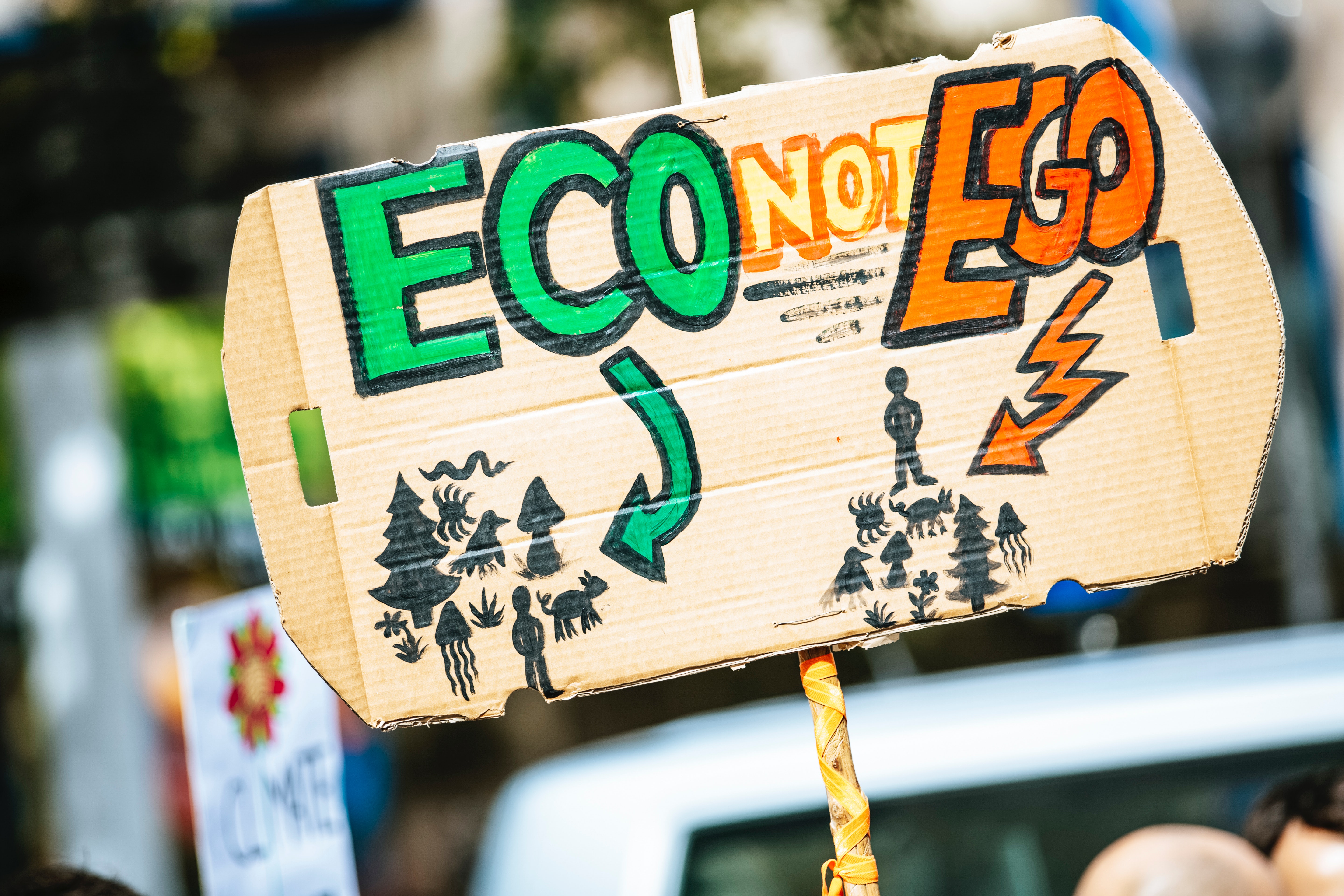Naturaleza y COVID-19: la pandemia, el medio ambiente y el camino a seguir
DOI:
https://doi.org/10.54502/msuceva.v2n1a10Palabras clave:
Biodefensa, Biodiversidad, Cambio climático, Comercialización de fauna silvestre, Enfermedades zoonóticas, SaludResumen
La pandemia de la COVID-19 ha traído profundos desafíos sociales, políticos, económicos y ambientales al mundo. El virus puede haber surgido de reservorios de vida silvestre vinculados a la perturbación ambiental, se transmitió a los humanos a través del comercio de vida silvestre y su propagación fue facilitada por la globalización económica. La pandemia llegó en un momento en que los incendios forestales, las altas temperaturas, las inundaciones y las tormentas, amplificaron el sufrimiento humano. Estos desafíos requieren una respuesta poderosa al COVID-19 que aborde el desarrollo social y económico, el cambio climático y la biodiversidad en conjunto, ofreciendo una oportunidad para generar un cambio transformador en la estructura y el funcionamiento de la economía global. Esta biodefensa puede incluir un enfoque de "Una sola salud" en todos los sectores relevantes; un enfoque más ecológico de la agricultura que minimice las emisiones de gases de efecto invernadero y conduzca a dietas más saludables; formas sostenibles de energía; acuerdos ambientales internacionales más efectivos; desarrollo post-COVID que sea equitativo y sostenible; y comercio internacional compatible con la naturaleza. El restaurar y mejorar las áreas protegidas como parte de la dedicación del 50 % de la tierra del planeta a una gestión ambientalmente racional que conserve la biodiversidad también apoyaría la adaptación al cambio climático y limitaría el contacto humano con patógenos zoonóticos. Los vínculos esenciales entre la salud y el bienestar humanos, la biodiversidad y el cambio climático podrían inspirar a una nueva generación de innovadores a brindar soluciones ecológicas que permitan a los humanos vivir en un equilibrio saludable con la naturaleza, lo que conducirá a un futuro resiliente a largo plazo.
Descargas
Métricas
Citas
Kausrud KL, Begon M, Ari T ben, Viljugrein H, Esper J, Büntgen U, et al. Modeling the epidemiological history of plague in Central Asia: Paleoclimatic forcing on a disease system over the past millennium. BMC Biology 2010;8:112.
https://doi.org/10.1186/1741-7007-8-112 DOI: https://doi.org/10.1186/1741-7007-8-112
Kohn G. Encyclopedia of plague and pestilence from ancient times to the present. New York: Infobase Publishing; 2007.
Herlihy D. the black death and the transformation of the west. Cambridge: Harvard University Press; 1997. DOI: https://doi.org/10.2307/j.ctvjghwgp
Swanson J. The fall of the Mongol Empire: Disintegration, disease, and an enduring legacy. New York: Rosen Publishing Group; 2017.
Smith PJ, Van Glahn R. The Song–Yuan–Ming transition in Chinese history. Cambridge: Harvard University Press; 2020.
Campbell BMS. The great transition: Climate, disease, and society in the Late Medieval World. Cambridge: Cambridge University Press; 2016. DOI: https://doi.org/10.1017/CBO9781139031110
Hsiang S, Allen D, Annan-Phan A, Bell K, Bolliger I, Chong T, Druckenmiller H, Huang L, et al. The effect of largescale anti-contagion policies on the COVID-19 pandemic. Nature 2020; 584: 262–267. https://doi.org/10.1038/s41586-020-2404-8 DOI: https://doi.org/10.1038/s41586-020-2404-8
OECD. Unprecedented falls in GDP in most G20 economies in second quarter of 2020. OECD News Release; 2020.
Reinhart C, Reinhart V. The pandemic depression: The global economy will never be the same. Foreign Affairs September/October; 2020. DOI: https://doi.org/10.31278/1810-6439-2021-19-1-26-36
Tienhaara K. A tale of two crises: What the global financial crisis means for the global environmental crisis. Environmental Policy and Governance 2010; 20: 197–208. https://doi.org/10.1002/eet.537 DOI: https://doi.org/10.1002/eet.537
WWF. Living planet report 2020: Bending the curve of biodiversity loss. Gland: World Wildlife Fund; 2020.
WEF. The future of nature and business. Geneva: World Economic Forum; 2020.
Fukuyama F. The pandemic and political order: it takes a state. Foreign Affairs July/August; 2020.
https://www.foreignaffairs. com/print/mode/1126047
Morens DM, Fauci AS. Emerging pandemic diseases: How we got to COVID-19. Cell 2020; 182: 1077–1092.
https://doi.org/10.1016/j.cell.2020.08.021 DOI: https://doi.org/10.1016/j.cell.2020.08.021
UNEP, ILRI. Preventing the next pandemic: zoonotic diseases and how to break the chain of transmission. Nairobi: United Nations Environmental Programme and International Livestock Research Institute; 2020.
Quammen D. Spillover: Animal infections and the next human pandemic. New York: W.W. Norton; 2012.
Jones KE, Patel N, Levy M, Storeygard A, Balk D, Gittleman J, Daszak P. Global trends in emerging infectious diseases. Nature 2008; 451: 990–993. https://doi.org/10.1038/nature06536 DOI: https://doi.org/10.1038/nature06536
Olivero J, Fa J, Real R, Marquez A, Farfan M, Vargas J, Gaveau D, Salim M, et al. Recent loss of closed forests is associated with Ebola virus disease outbreaks. Scientific Reports 2017; 7: 14291.
https://doi.org/10.1038/s41598-017-14727-9 DOI: https://doi.org/10.1038/s41598-017-14727-9
Cheng Y, Yu L, Xu Y, Lu A, Hui K, Kanniah K, Cracknell A, Gong P. Mapping oil palm extent in Malaysia using ALOS-2 PALSAR-2 data. International Journal of Remote Sensing 2018; 39: 432–452. https://doi.org/10.1080/01431161.2017.1387309 DOI: https://doi.org/10.1080/01431161.2017.1387309
Wolfe ND, et al. Origins of major human infectious diseases. Nature 2005; 447: 279–283. https://doi.org/10.1038/nature05775 DOI: https://doi.org/10.1038/nature05775
Rohr JR, Barrett CB, Civitello D, Craft M, Delius B, DeLeo GA, Hudson P, Jouanard N, et al. Emerging human infectious diseases and the links to global food production. Nature Sustainability 2019; 2: 445–456. https://doi.org/10.1038/s41893-019-0293-3 DOI: https://doi.org/10.1038/s41893-019-0293-3
CBD. The Convention on Biological Diversity. Montreal:
Secretariat of the Convention on Biological Diversity; 1992.
Ninan KN. Conserving and valuing ecosystem services and biodiversity: Economic, institutional, and social challenges. London: Earthscan; 2009.
Kumar P. The economics of ecosystems and biodiversity: Ecological and economic foundations. London: Earthscan; 2010.
Soliveres S, van der Plas F, Manning P, Pratt D, Gossner M, Benner S, Alt F, Arndt H, et al. Biodiversity at multiple trophic levels is needed for ecosystem multifunctionality. Nature 2016; 536: 456–459.
https://doi.org/10.1038/nature19092 DOI: https://doi.org/10.1038/nature19092
Rohr JR, Civitello DJ, Halliday F, Hudson P, Lafferty K, Wood C, Mordecai E. Towards common ground in the biodiversity-disease debate. Nature Ecology and Evolution 2020; 4: 24–33.
https://doi.org/10.1038/s41559-019-1060-6 DOI: https://doi.org/10.1038/s41559-019-1060-6
WHO, SCBD. Connecting global priorities: Biodiversity and human health. Geneva: World Health Organization and Secretariat of the Convention on Biological Diversity; 2015.
Everard M, Johnston P, Santillo D, Staddon C. The role of ecosystems in mitigation and management of COVID-19 and other zoonoses. Environmental Science and Policy 2020; 111: 7–17.
https://doi.org/10.1016/j.envsci.2020.05.017 DOI: https://doi.org/10.1016/j.envsci.2020.05.017
Sachs JD, Schmidt-Traub G, Mazzucato M, Messner D, Nakicenovic N, Rockstro¨m J. Six transformations to achieve the Sustainable Development Goals. Nature Sustainability 2019; 2: 805–814.
https://doi.org/10.1038/s41893-019-0352-9 DOI: https://doi.org/10.1038/s41893-019-0352-9
SCBD. Strategic plan for biodiversity 2011–2020, including the Aichi Targets. Montreal: Secretariat of the Convention on Biological Diversity; 2010.
SCBD. Global Biodiversity Outlook 5. Montreal: Secretariat of the Convention on Biological Diversity; 2020.
Bolam FC, Mair L, Angelico M, Brooks T, Burgman M, Hermes C, Hoffmann M, Martin R, et al. How many bird and mammal extinctions have recent conservation action prevented? Conservation Letters 2020; 14(1): 1-11. https://doi.org/10.1111/conl.12762 DOI: https://doi.org/10.1111/conl.12762
IPBES. global assessment report on biodiversity and ecosystem services of the intergovernmental science-policy platform on biodiversity and ecosystem services. Bonn: IPBES Secretariat; 2019.
Lenzen M, Moran D, Kanemoto K, Lobefaro L, Geschke A. International trade drives biodiversity threats in developing nations. Nature 2012; 486: 109–112. https://doi.org/10.10.1038/nature11145 DOI: https://doi.org/10.1038/nature11145
Ceballos G, Ehrlich P, Raven P. Vertebrates on the brink as indicators of biological annihilation and the sixth mass extinction. Proceedings of the National Academy of Science of USA 2020; 117(24): 13596-13602. https://doi.org/10.1073/pnas.1922686117 DOI: https://doi.org/10.1073/pnas.1922686117
FAO. Global forest resources assessment 2020. Food and Agriculture Organization of the United Nations Rome; 2020.
https://doi.org/10.4060/ca8753en DOI: https://doi.org/10.4060/ca8753en
IUCN. IUCN red list of endangered species. Gland: International Union for Conservation of Nature; 2020.
Gibson L, Lee T, Koh L, Brook B, Gardner T, Barlow J, Peres C, Bradshaw C. et al. Primary forests are irreplaceable for sustaining tropical biodiversity. Nature 2011; 478: 378–381.
https://doi.org/10.1038/nature10425 DOI: https://doi.org/10.1038/nature10425
Hanski I. Habitat loss, the dynamics of biodiversity, and a perspective on conservation. Ambio 2011; 40: 248–255.
https://doi.org/10.1007/s13280-011-0147-3 DOI: https://doi.org/10.1007/s13280-011-0147-3
Fahrig L. Ecological responses to fragmentation per se. Annual Review of Ecology, Evolution, and Systematics 2017; 48: 1–23. DOI: https://doi.org/10.1146/annurev-ecolsys-110316-022612
https://doi.org/10.1046/annurev-ecolsys-110316-022612
Haddad N, Brudvig L, Clobert J, Davies K, Gonzalez A, Holt R, Lovejoy T, Sexton J, et al. Habitat fragmentation and its lasting impact on Earth’s ecosystems. Science Advances 2015; 1(2): :e1500052. DOI: https://doi.org/10.1126/sciadv.1500052
https://doi.org/10.1126/sciadv.1500052
O’Mara FP. The significance of livestock as a contributor to global greenhouse gas emissions today and in the near future. Animal Feed Science and Technology 2011; 166–167: 7-15. DOI: https://doi.org/10.1016/j.anifeedsci.2011.04.074
https://doi.org/10.1016/j.anifeedsci.2011.04.074
Gibb R, Redding DW, Chin K, Donnelly C, Blackburn T, Newbold T, Jones K. Zoonotic host diversity increases in human-dominated ecosystems. Nature 2020; 584:398–402. https://doi.org/10.1038/s41586-020-2562-8 DOI: https://doi.org/10.1038/s41586-020-2562-8
Laborde D, Martin DW, Swinnen J, Vos R. COVID-19 risks to global food security. Science 2020; 369: 500–502.
https://doi.org/10.1126/science.abc4765 DOI: https://doi.org/10.1126/science.abc4765
Beasley DM. The upcoming hunger pandemic. Foreign Affairs 16 June; 2020. https://www.foreignaffairs.com/articles/world/2020-06-16/looming-hunger-pandemic
Dou E. China’s mealtime appeal amid food supply worries: Don’t take more than you can eat. Washington Post 5 October; 2020. https://www.washingtonpost.com/world/asia_pacific/china-food-shortage-clean-plate/2020/10/02/578daa0e-0223-11eb-b92e-029676f9ebec_story.html
Diaz S, Settele J, Brondı´zio E, Ngo H, Agard J, Arneth A, Balvanera P, Brauman K, et al. Pervasive human-driven decline of life on Earth points to the need for transformative change. Science 2019; 366(6471):eaax3100. https://doi.org/10.1126/science.aaw.3100
Scheffers BR, Oliveira BF, Lamb I, Edwards D. Global wildlife trade across the tree of life. Science 2019; 366: 71–76. https://doi.org/10.1126/science.aav5327 DOI: https://doi.org/10.1126/science.aav5327
O’Hanlon S, Rieux A, Farver R, Rosa G, Waldman B, Bataille A,
Kosch T, Murray K, et al. 2020. Recent Asian origin of chytrid fungi causing global amphibian declines. Science 369: 621–627.
https://doi.org/10.1126/science.aar1965 DOI: https://doi.org/10.1126/science.aar1965
Wittenberg R, Cock MJW. Invasive alien species: A toolkit of best prevention and management practices. Wallingford: CAB International; 2001. DOI: https://doi.org/10.1079/9780851995694.0000
Myerson LA, Mooney HA. Invasive alien species in an era of globalization. Frontiers in Ecology and the Environment 2007; 5(4): 199-208 DOI: https://doi.org/10.1890/1540-9295(2007)5[199:IASIAE]2.0.CO;2
https://doi.org/10.1890/1540-9295(2007)5[199:IASIAE]2.0co;2
WHO. Climate change and human health: Risks and responses. Geneva: World Health Organization; 2003.
IPCC. Summary for policymakers. In Global warming of 1.5°C. Geneva: World Meteorological Organization; 2018.
Landrum L, Holland M. Extremes become routine in an emerging new Arctic. Nature Climate Change 2020; 10:1108–1115. DOI: https://doi.org/10.1038/s41558-020-0892-z
https://www.nature.com/articles/s41558-020-0892-z
Ciavarella A, Cotterill D, Stott P, Kew S. Prolonged Siberian heat of 2020. World Weather Attribution; 2020.
Hugelius G, Loisel J, Chadburn S, Jackson R, Jones M, MacDonald G, Marushchak M, Olefeldt D, et al. Large stocks of peatland carbon and nitrogen are vulnerable to permafrost thaw. Proceedings of the National Academy of Science of USA 2020; 117(34): 20438-20446.
https://doi.org/10.1073/pnas.1916387117 DOI: https://doi.org/10.1073/pnas.1916387117
Jansen E, Christensen J, Dokken T, Nisancioglu K, Vinther B, Capron E, Guo C, Jensen M. et al. Past perspectives on the present era of abrupt Arctic climate change. Nature Climate Change 2020; 10: 714–721.
https://doi.org/10.1038/s41558-020-0860-7 DOI: https://doi.org/10.1038/s41558-020-0860-7
Henderson SB. The COVID-19 pandemic and wildlife smoke: Potentially concomitant disasters. American Journal of Public Health 2020; 110(8): 1140-1142. https://doi.org/10.2105/AJPH.2020.305744 DOI: https://doi.org/10.2105/AJPH.2020.305744
Petroni M, Hill D, Younes L, Barkman L, Howard S, Howell I, Mirowsky J, Collins M. Hazardous air pollutant exposure as a contributing factor to COVID-19 mortality in the United States. Environment Research Letters 2020; 15(9): 0940a9. https://doi.org/10.1088/1748-9326/abaf86 DOI: https://doi.org/10.1088/1748-9326/abaf86
DeRidder K. COVID-19 vs climate change: What can we learn? In Asia insights and analysis. New York: The Asia Foundation June 10; 2020. https://asiafoundation.org/2020/06/10/covid-19-vs-climate-change-what-can-we-learn/
Badola S. Indian wildlife amidst the COVID-19 crisis: An analysis of poaching and illegal wildlife trade. New Delhi:TRAFFIC; 2020. http://indiaenvironmentportal.org.in/content/467770/indian-wildlife-amidst-the-covid-19-crisis-an-analysis-of-status-of-poaching-and-illegal-wildlife-trade/
Gardner C. Nature’s comeback? No, the coronavirus pandemic threatens the world’s wildlife; 2020.
https://www.twn.my/twnf/2020/4930.htm
Somerville K. COVID-19 increases the pressure: Botswana’s rhino-poaching crisis. Global Geneva; 2020.
Escobar H. Deforestation in the Brazilian Amazon is still rising sharply. Science 2020; 369: 613.
https://doi.org/10.1126/science.369.6504.613 DOI: https://doi.org/10.1126/science.369.6504.613
Hockings M, Dudley N, Elliott W, Ferreira M, MacKinnon K, Pasha M, Phillips A, Stolton S, et al. Editorial essay: COVID-19 and protected and conserved areas. Parks 2020; 26: 7–23. https://doi.org/10.2305/IUCN.CH.2020.PARKS‐26‐1MH.en
Derryberry EP, Phillips J, Derryberry G, Blum M, Luther D. Singing in a silent spring: Birds respond to a half-century soundscape reversion during the COVID-19 shutdown. Science 2020; 370: 575-579. https://doi.org/10.1126/science.abd5777 DOI: https://doi.org/10.1126/science.abd5777
Forster PM, Forster HI, Evans M, Gidden M, Jones D, Keller C, Lamboli R, LeQuere C, et al. Current and future global climate impacts resulting from COVID-19. Nature Climate Change 2020; 10: 913–919. https://doi.org/10.1038/s41558-020-0883-0 DOI: https://doi.org/10.1038/s41558-020-0883-0
IEA. Global Energy Review 2020: The impacts of the COVID-19 crisis on global energy demand and CO2 emission. Paris: International Energy Agency; 2020.
Osofsky SA, Koch RA, Koch MD, Kalema-Zikusoka G, Grahn R, Leyland T, Karesh W. Building support for protected areas using a ‘‘One Health’’ perspective. In Friends for life: New partners in support of protected areas, ed. J.A. McNeely, 65–80. Gland: IUCN; 2005.
SCBD. Guidance on integrating biodiversity considerations into One Health approaches. Montreal: Secretariat of the Convention on Biological Diversity; 2017.
WHO, OIE, FAO. Taking a multisectoral, One Health approach: A tripartite guide to addressing zoonotic diseases in countries. Geneva, Paris, and Rome: World Health Organization, World Organization for Animal Health, and Food and Agriculture Organization of the United Nations; 2019.
Cook R, Karesh W, Osofsky S. One World, One Health: Building interdisciplinary bridges to heal in a globalized world. Bronx: Wildlife Conservation Society; 2004.
WCS (Wildlife Conservation Society). The Berlin Principles; 2019. https://oneworldonehealth.wcs.org.
Maller C, Townsend M, Brown P, St Leger L. Healthy parks, healthy people: The health benefits of contact with nature in a park context: A review of current literature. Melbourne: Deakin University Faculty of Health and Behavioral Sciences; 2002.
Karesh W, Cook RA. One world–One health. Clinical Medicine 2009; 9: 259–260. https://doi.org/10.7861/clinmedicine.9-3-259 DOI: https://doi.org/10.7861/clinmedicine.9-3-259
FAO. The 10 elements of agroecology: Guiding the transition to sustainable food systems. Rome: Food and Agriculture Organization of the United Nations; 2018.
Loken B, DeClerck F. Diets for a better future: Rebooting and reimagining healthy and sustainable food systems in the G20; 2020. https://eatforum.org/knowledge/diets-for-a-betterfuture/
Willet W, Rockstrom J, Loken B, Springmann M, Lang T, Vermeulen S, Garnett T, Tilman D, et al. Food in the Anthropocene: The EAT-Lancet commission on healthy diets from sustainable food systems. The Lancet 2019; 393: 447–485. https://doi.org/10.1016/S0140-6736(18)31788-4 DOI: https://doi.org/10.1016/S0140-6736(18)31788-4
Wilson EO. Biophilia. Cambridge: Harvard University Press; 1984. DOI: https://doi.org/10.4159/9780674045231
Louv R. The last child in the woods: Saving our children from nature deficit disorder. New York: Algonquin Books; 2005.
Trzyna T. Urban protected areas: Profiles and best practice guidelines. Gland: International Union for Conservation of Nature; 2014.
Tan PY, Jim CY. Greening cities: Forms and functions. Singapore: Springer; 2017. https://doi.org/10.1007/978-981-10-4113-6 DOI: https://doi.org/10.1007/978-981-10-4113-6
Sokolova O, Naumann M. NF-κB Signaling in gastric cancer. Toxins (Basel) 2017; 9. https://doi.org/10.3390/toxins9040119 DOI: https://doi.org/10.3390/toxins9040119
Nystro¨m M, Jouffray JB, Norstro¨m AV, Crona B, Søgaard P, Jørgensen S, Carpenter SR, Bodin O, Galaz V, et al. Anatomy and resilience of the global production ecosystem. Nature 2019; 575: 98–108.
https://doi.org/10.1038/s41586-019-1712-3 DOI: https://doi.org/10.1038/s41586-019-1712-3
IUCN. Guidelines for applying protected area management June 12; 2013. https://www.iucn.org/es/node/15224
Xu W, Xiao Y, Zhang J, Yang W, Zhang L, Hull V, Wang Z, Zheng H, et al. Strengthening protected areas for biodiversity and ecosystem services in China. Proceedings of the National Academy of Science of USA 2017; 114: 1601–1606. https://doi.org/10.1073/pnas.1620503114 DOI: https://doi.org/10.1073/pnas.1620503114
Wilson EO, Half-Earth: Our planet’s fight for survival. New York: W.W. Norton; 2016.
UNEP-WCMC, IUCN, NGS. Protected planet reports digital report; 2020. https://livereport.protectedplanet.net/
SCBD. Protected areas and other effective area-based conservation measures. Montreal: Secretariat of the Convention on Biological Diversity; 2018.
Dudley N, Jonas H, Nelson F, Parrish J, Pyhala A, Stolton S, Watson J. The essential role of other effective area-based conservation measures in achieving big bold conservation targets. Global Ecology and Conservation 2018; 15: e00424. https://doi.org/10.1016/j.gecco.2018.e00424 DOI: https://doi.org/10.1016/j.gecco.2018.e00424
Dinerstein E, Joshi A, Vynne C, Lee A, Pharand-Descheˆnes F, Franc M, Fernando S, Birch T. et al. A ‘‘Global Safety Net’’ to reverse biodiversity loss and stabilize Earth’s climate. Science Advances 2020; 6: eabb2824. https://doi.org/10.1126/sciadv.abb2824 DOI: https://doi.org/10.1126/sciadv.abb2824
Waldron A, Adams V, Allan J, Arnell A, Asner G, Atkinson S, Baccini A, Baillie J. et al. Protecting 30% of the planet for nature: Costs, benefits, and economic implications. Washington, DC: Campaign for Nature; 2020.
Hoegh-Guldberg O, Poloczanska E, Skirving W, Dove S. Coral reef ecosystems under climate change and ocean acidification. Frontiers in Marine Science 2017; 4:158. https://doi.org/10.3389/fmars.2017.00158 DOI: https://doi.org/10.3389/fmars.2017.00158
Sala E, Giakoumi S. No-take marine reserves are the most effective protected areas in the ocean. ICES Journal of Marine Science 2018; 75(3): 1166–1168. https://doi.org/10.1093/icesjms/fsx059 DOI: https://doi.org/10.1093/icesjms/fsx059
Warne K. Preserving our pristine seas will boost biodiversity, replenish fishing stocks, and store carbon. National Geographic September; 2020. https://www.nationalgeographic.com/magazine/issue/september-2020
Walsh PJ, Smith S, Fleming L, Solo-Gabriele H, Gerwick W. Oceans and human health: risks and remedies from the sea. St Louis: Elsevier; 2008.
IEA. Sustainable recovery: World energy outlook special report. Paris: International Energy Agency; 2020.
O’Meara S. China’s plan to cut coal and boost green growth. Nature 2020; 584: S1-S3. https://media.nature.com/original/magazine-assets/d41586-020-02464-5/d41586-020-02464-5.pdf DOI: https://doi.org/10.1038/d41586-020-02464-5
Goldthau A, Hughes L. Protect global supply chains for low-carbon technologies. Nature 2020; 585: 28-30. DOI: https://doi.org/10.1038/d41586-020-02499-8
https://media.nature.com/original/magazine-assets/d41586-020-02499-8/d41586-020-02499-8.pdf.
Jacobson MZ, Delucci M, Cameron M, Coughlin S, Hay C, Manogaran I, Shu Y, van Krauland A. Impacts of green new deal energy plan on grid stability, costs, jobs, health, and climate in 143 countries. One Earth 2019; 1: 449–463. https://doi.org/10.1016/j.oneear.2019.12.003 DOI: https://doi.org/10.1016/j.oneear.2019.12.003
Coady D, Parry I, Le N, Shang B. Global fossil fuel subsidies remain large: An update based on country-level estimates. Washington, DC: International Monetary Fund; 2019. DOI: https://doi.org/10.5089/9781484393178.001
Strauch Y, Carter A, Homer-Dixon T. However, the pandemic unfolds, it’s time for oil use to peak—And society to prepare for the fallout. Bulletin of the Atomic Scientists 2020; 76 (5): 2238–2243. https://doi.org/10.1080/00963402.2020.1806577 DOI: https://doi.org/10.1080/00963402.2020.1806577
MacMillan M. Which past is prologue? Heeding the right warnings from history. Foreign Affairs September/October; 2020.
https://www.foreignaffairs.com/print/node/1126373
Haass R. The pandemic will accelerate history rather than reshape it. Foreign Affairs 2020; https://www.foreignaffairs.com/print/node/1125883
Dobson A, Pimm S, Hannah L, Kaufman L, Ahumada J, Ando A, Bernstein A, Busch J, et al. Ecology and economics of pandemic prevention. Science 2020; 369: 379–381. https://doi.org/10.1126/science.abc3189 DOI: https://doi.org/10.1126/science.abc3189
Corlett RT, Primack R, Devictor V, Maas B, Goswami V, Bates A, Koh L, Regan T. et al. Impacts of the coronavirus pandemic on biodiversity conservation. Biological Conservation 2020; 246: 108571. https://doi.org/10.1016/j.biocon.2020.108571 DOI: https://doi.org/10.1016/j.biocon.2020.108571
Hoban S, Bruford M, Jackson J, Lopes-Fernandez M, Heuertz M, Hohenlohe P, Pas-Vinas I, Sjo¨gren-Golve P. et al. Policy analysis: Genetic diversity targets and indicators in the CBD post-2020 Global Biodiversity Framework must be improved. Biological Conservation 2020; 248: 108654. https://doi.org/10.1016/j.biocon.2020.108654 DOI: https://doi.org/10.1016/j.biocon.2020.108654
Rounsevell M, Harfoot M, Harrison P, Newbold T, Gregory R, Mace G. A biodiversity target based on species extinctions. Science 2020; 368: 1193–1195. https://doi.org/10.1126/science.aba6592 DOI: https://doi.org/10.1126/science.aba6592
Griggs D, Stafford-Smith M, Gaffney O, Rockstro¨m J, Ohman M, Shyamsundar P, Steffan W, Glaser G. et al. Sustainable development goals for people and planet. Nature 2013; 495: 305–307.
https://doi.org/10.1038/495305a DOI: https://doi.org/10.1038/495305a
Nilsson M. Griggs D, Visbeck M. Map the interactions between the sustainable development goals. Nature 2016; 534:320–322. https://doi.org/10.1038/534320a DOI: https://doi.org/10.1038/534320a
Zeng Y, Maxwell S, Runting RK, Venter O, Watson J, Carrasco L. Environmental destruction not avoided with the sustainable development goals. Nature Sustainability 2020; 3:795–798. https://doi.org/10.1038/s41893-020-0555-0 DOI: https://doi.org/10.1038/s41893-020-0555-0
Naidoo R, Fisher B. Reset the sustainable development goals for a pandemic world. Nature 2020; 583: 198–201. DOI: https://doi.org/10.1038/d41586-020-01999-x
https://media.nature.com/original/magazine-assets/d41586-020-01999-x/d41586-020-01999-x.pdf.
Garnett ST, Burgess ND, Fa J, Fernandez-Liamazares A, Molnar Z, Robinson C, Watson J, Zander K. et al. A spatial overview of the global importance of Indigenous lands for conservation. Nature Sustainability 2018; 1: 369–374. https://doi.org/10.1038/s41893-018-0100-6 DOI: https://doi.org/10.1038/s41893-018-0100-6
Ford JD, King N, Galappaththi E, Pearce T, McDowell G, Harper S. The resilience of Indigenous peoples to environmental change. One Earth 2; 2020. https://creativecommons.org/licenses/by-nc-nd/4.0/ DOI: https://doi.org/10.1016/j.oneear.2020.05.014
Brown CP. COVID-19 could bring down the trading system. Foreign Affairs, 28 April; 2020.
Frank EG, Wilcove DS. Long delays in banning trade in threatened species. Science 2019; 363: 686–688.
https://doi.org/10.1126/science.aav4013 DOI: https://doi.org/10.1126/science.aav4013
Di Minin E, Fink C, Tenkanen H, Hippala T. Machine learning for tracking illegal wildlife trade on social media. Nature Ecology and Evolution 2018; 2, 406–407. https://doi.org/10.1038/s41559-018-0466-x DOI: https://doi.org/10.1038/s41559-018-0466-x
Thomas-Walters L, Cheung H, Ming-Lee T, Wan A, Wang Y. Targeted values: The relevance of classical Chinese philosophy for illegal wildlife demand reduction campaigns. People and Nature 2020; 2(4): 964-971. https://doi.org/10.1002/pan3.10127 DOI: https://doi.org/10.1002/pan3.10127
McCormick A. Big city mayors around the world want green stimulus spending in the aftermath of COVID-19. The Nation September 9; 2020.
Haines A. Health co-benefits of climate action. The Lancet Planetary Health 2017; 1: E4–E5. DOI: https://doi.org/10.1016/S2542-5196(17)30003-7
https://doi.org/10.1016/s.2542-5196(1)30003-7
Aizawa M. Sustainable development through quality infrastructure: Emerging focus on quality over quantity. Journal of Mega Infrastructure and Sustainable Development 2019; 1: 171–187. https://doi.org/10.1080/24724718.2019.1706922

Descargas
Publicado
Cómo citar
Número
Sección
Licencia
Derechos de autor 2022 McNeely JA.

Esta obra está bajo una licencia internacional Creative Commons Atribución-NoComercial-SinDerivadas 4.0.
Magna Scientia UCEVA proporciona un acceso abierto, libre y gratuito a su contenido, basado en el principio de que ofrecer al público un acceso libre a las investigaciones, ayuda a un mayor intercambio global del conocimiento. Lo cual, implica que los usuarios pueden leer, descargar, almacenar, imprimir, buscar, indexar y realizar enlaces a los textos completos de esta revista. Se permite distribuir los diversos artículos en las versiones post-print y oficial, sin previo permiso del autor o editor, considerando que el fin de este, no implica fines comerciales, ni la generación de obras derivadas; Solo se solicita la mención de la fuente así como la autoría. El titular del copyright será el o los autores que publiquen en Magna Scientia UCEVA.
Magna Scientia UCEVA está distribuida bajo los términos de la licencia https://creativecommons.org/licenses/by-nc-nd/4.0/deed.es




















